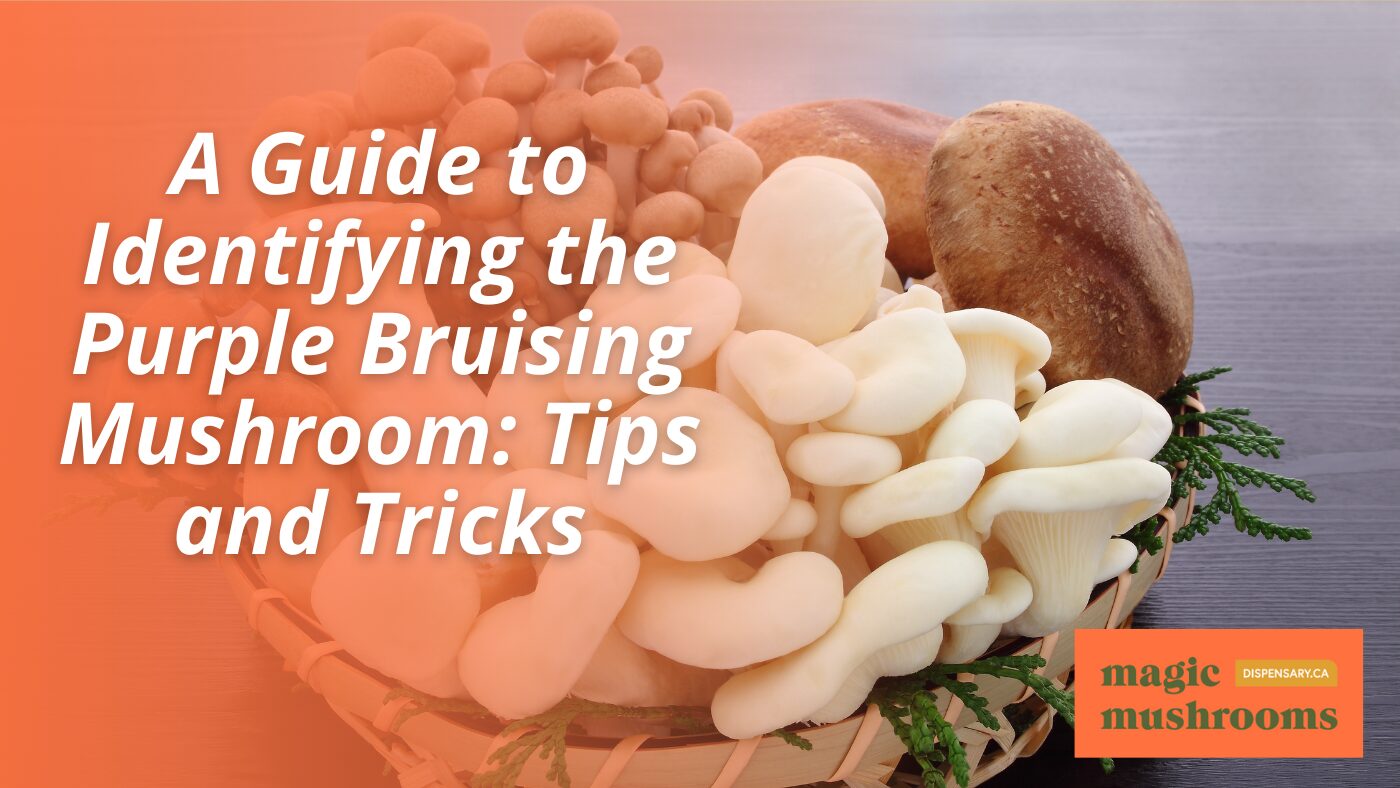The Purple Bruising Mushroom is an intriguing and distinctive type that has garnered the attention of novice and expert mushroom enthusiasts alike. Identifying this fungus requires knowledge of its specific characteristics, natural environment, and chemical makeup. This manual will offer crucial advice and strategies for precisely and securely recognizing the Purple Bruising Mushroom.
Key Takeaways
- The Purple Bruising Mushroom is easily identifiable by its unique color changes when bruised.
- This mushroom typically grows in specific habitats, often in damp and shaded areas.
- Understanding the chemical makeup of the mushroom is crucial for recognizing its potency and potential effects.
- Proper identification techniques, including visual and microscopic examination, are essential to avoid confusion with toxic species.
- Knowledge of the mushroom’s ecological role and historical significance can enhance your foraging experience.
Morphological Characteristics of the Purple Bruising Mushroom
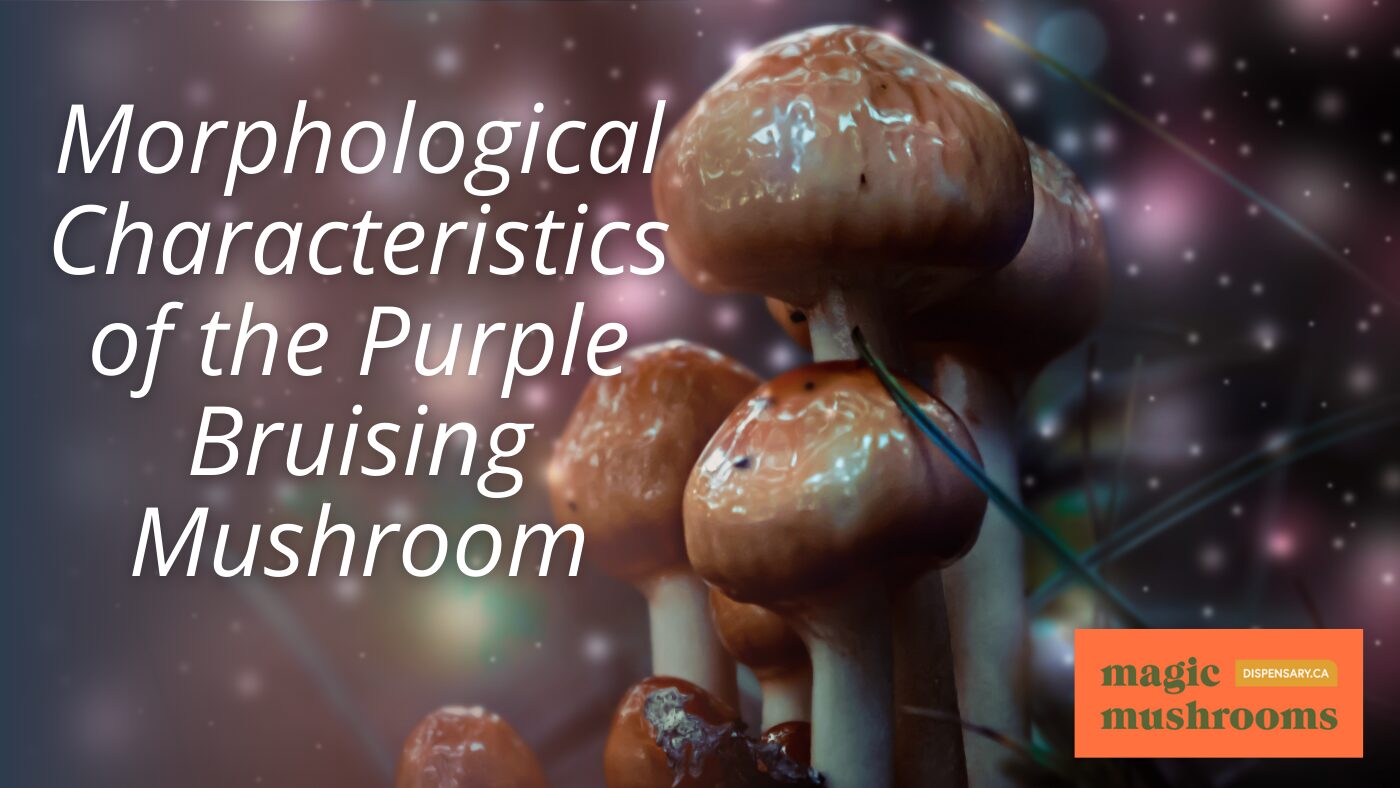
Cap Structure and Colouration
The cap of the Purple Bruising Mushroom is typically convex when young, flattening out as it matures. It often exhibits a rich, deep purple hue, which can sometimes appear almost black in certain lighting conditions. The surface of the cap may be smooth or slightly fibrous, depending on the specific environmental conditions in which it grows. Notably, the cap’s coloration can change when bruised, often darkening to a more intense purple or black.
Stem Features and Texture
The stem of this mushroom is generally sturdy and can range from white to a light purple shade. It is usually smooth but may develop a fibrous texture as it ages. When handled, the stem bruises easily, turning a distinctive purple color. This bruising is a key identifying feature and can help differentiate it from other species.
Gills and Spore Print
The gills of the Purple Bruising Mushroom are closely spaced and can be white to light purple. They are attached to the stem and may darken with age or when bruised. The spore print of this mushroom is typically dark purple, a crucial characteristic for identification. If the spore print shows orange or rusty brown colors, it is likely not a Purple Bruising Mushroom.
Observing these morphological characteristics carefully can significantly aid in the accurate identification of the Purple Bruising Mushroom. Always take note of the cap, stem, and gill features, as well as the spore print, to ensure correct identification.
Habitat and Distribution
Preferred Growing Conditions
The Purple Bruising Mushroom thrives in a variety of environments. It is commonly found in mixed hardwood forests, often growing on the ground rather than on trees. This species prefers damp and warm climates, making it prevalent in regions with high humidity. The mushroom feeds on rotting organic materials and wood, which provides the necessary nutrients for its growth.
Geographical Range
This mushroom is predominantly found along the West Coast of the United States. However, it is also native to subtropical and tropical regions of Central and South America. Over time, it has been widely cultivated and can now be found in various parts of the world. Its adaptability to different climates has contributed to its widespread distribution.
Seasonal Occurrence
The Purple Bruising Mushroom typically fruits during the late summer and autumn seasons. In some regions, it can also be found in the spring, depending on the local climate conditions. The timing of its fruiting is influenced by the availability of moisture and temperature, which are crucial for its development.
Understanding the habitat and distribution of the Purple Bruising Mushroom is essential for foragers and researchers alike. Knowing where and when to find this species can greatly enhance the chances of successful identification and study.
Chemical Composition and Potency
The Purple Bruising Mushroom contains several active compounds that contribute to its psychoactive effects. The primary compounds are psilocybin and psilocin, which are well-known for altering perception and mood. In addition, other compounds, such as biocytin and aeruginascin, may also play a role in the mushroom’s overall effects.
The potency of the Purple Bruising Mushroom can vary significantly between individual specimens. Factors such as growing conditions, age, and even the specific strain can influence the concentration of active compounds. Each species has a unique potency profile, making it essential to understand the particular characteristics of the mushroom you are studying or consuming.
Various methods of analysis are employed to determine these mushrooms’ chemical composition and potency accurately. These include chromatographic techniques that can separate and identify the compounds present. Microscopic examination can also provide insights into the structure and concentration of the active ingredients.
Understanding the chemical composition and potency of the Purple Bruising Mushroom is crucial for both scientific research and safe consumption. Accurate identification and analysis can help mitigate risks and enhance the benefits of these fascinating fungi.
Ecological Role and Symbiosis
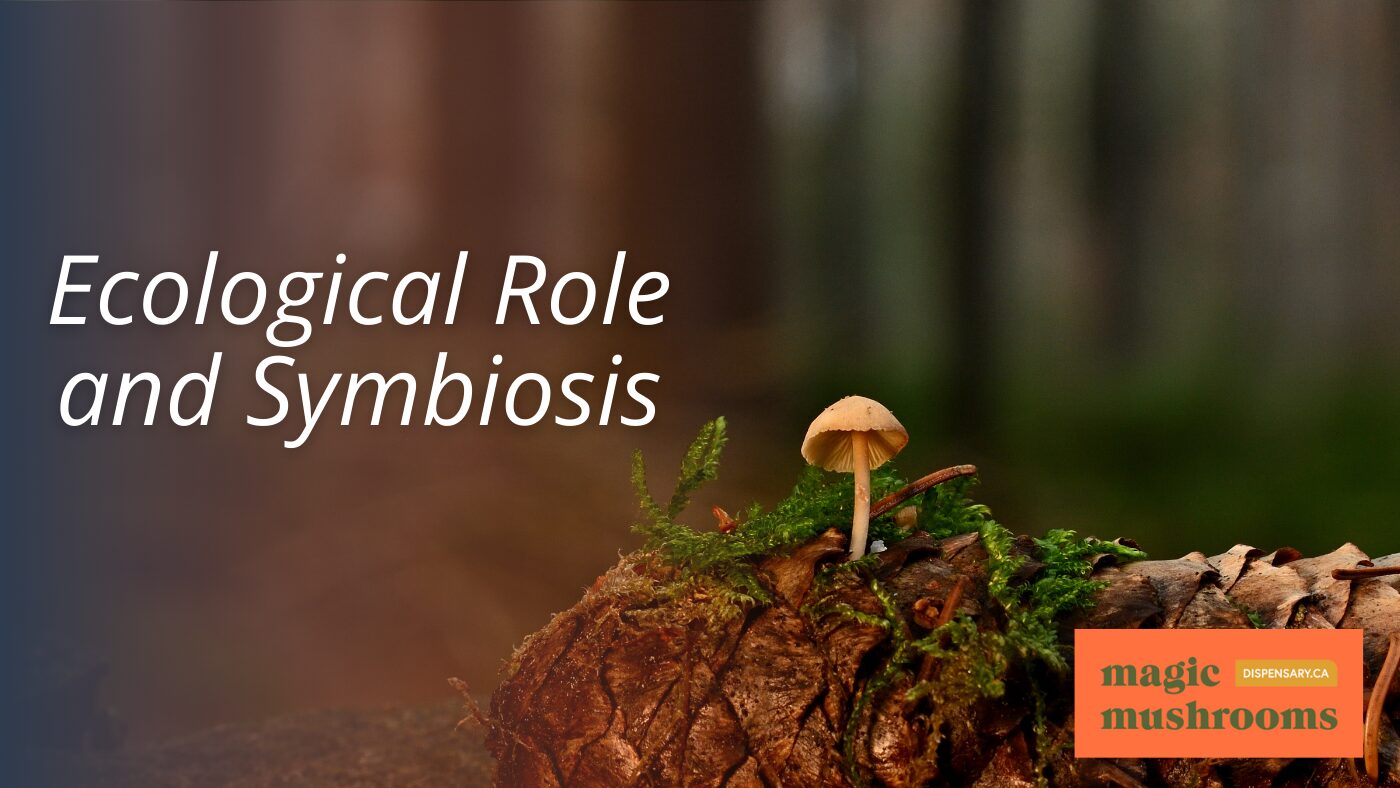
Mushrooms, including the Purple Bruising Mushroom, play a crucial role in ecosystems as decomposers. They break down dead plant and animal matter into simpler forms like sugars, nitrates, and phosphates, which other organisms or plants then use for food. This process is essential for nutrient cycling and maintaining soil health.
Symbiotic Relationships
The Purple Bruising Mushroom often forms symbiotic relationships with the roots of certain trees and plants. This mutualistic association, known as mycorrhiza, benefits both the mushroom and its plant host. The mushroom provides the plant with essential nutrients, while the plant supplies the mushroom with carbohydrates. This relationship enhances the growth and health of both organisms.
Impact on Soil Health
The Purple Bruising Mushroom contributes to soil fertility by breaking down organic matter. The nutrients released during decomposition enrich the soil, promoting plant growth. Additionally, the mycorrhizal associations help improve soil structure and water retention, further benefiting the ecosystem.
Understanding the ecological role of mushrooms like the Purple Bruising Mushroom highlights their importance in maintaining healthy ecosystems. Their ability to decompose organic matter and form symbiotic relationships with plants underscores their vital contribution to nutrient cycling and soil health.
Historical and Cultural Significance
The Purple Bruising Mushroom has a rich history intertwined with human culture and tradition. Prehistoric artifacts from various regions suggest that these mushrooms were used in ancient rituals and ceremonies. These artifacts, dating back thousands of years, indicate that early humans might have recognized the unique properties of these fungi.
Traditional Uses
The Purple Bruising Mushroom was revered in many indigenous cultures for its mystical properties. Shamans and healers often used it in spiritual practise, believing it could connect them to the spirit world. The mushroom’s ability to cause vivid hallucinations made it a powerful tool in these rituals.
Cultural Beliefs and Practises
Throughout history, different societies have held various beliefs about the Purple Bruising Mushroom. In some cultures, it was seen as a sacred entity; in others, it was feared and avoided. The mushroom’s role in folklore often revolved around its hallucinogenic effects, leading to myths about its powers and dangers.
Modern Applications
Today, the Purple Bruising Mushroom is studied for its potential therapeutic benefits. Researchers are exploring its use in treating mental health conditions such as depression and anxiety. Despite its controversial status, the mushroom remains a subject of fascination and study in the scientific community.
The importance of accurate identification and responsible use of hallucinogenic mushrooms in religion and spirituality cannot be overstated. Misidentification can lead to severe consequences, highlighting the need for education and caution in their use.
Identification Techniques
Visual Identification
Visual identification is the first step in recognizing the Purple Bruising Mushroom. Key physical features include the cap’s color and shape, the stem’s texture, and the gills’ arrangement. It’s crucial to note any color changes, especially the distinctive purple bruising when the mushroom is handled. This bruising is a reliable indicator of the species.
Microscopic Examination
For a more precise identification, microscopic examination is essential. This involves analyzing the spores, which can provide definitive evidence of the mushroom’s identity. The spores of the Purple Bruising Mushroom are typically dark purple to black. Using a microscope, one can observe the spore size, shape, and ornamentation unique to this species.
Chemical Tests
Chemical tests can further confirm the identity of the Purple Bruising Mushroom. Applying a small amount of potassium hydroxide (KOH) to the mushroom’s flesh can cause a colour change, which is a helpful diagnostic feature. Additionally, High Resolution Melting (HRM) analysis can be used to identify specific genetic markers unique to this species, providing a reliable method for differentiation.
By applying basic identification skills and utilising these resources, we can enhance our understanding of these fascinating organisms while reducing potential risks.
Safety and Toxicity
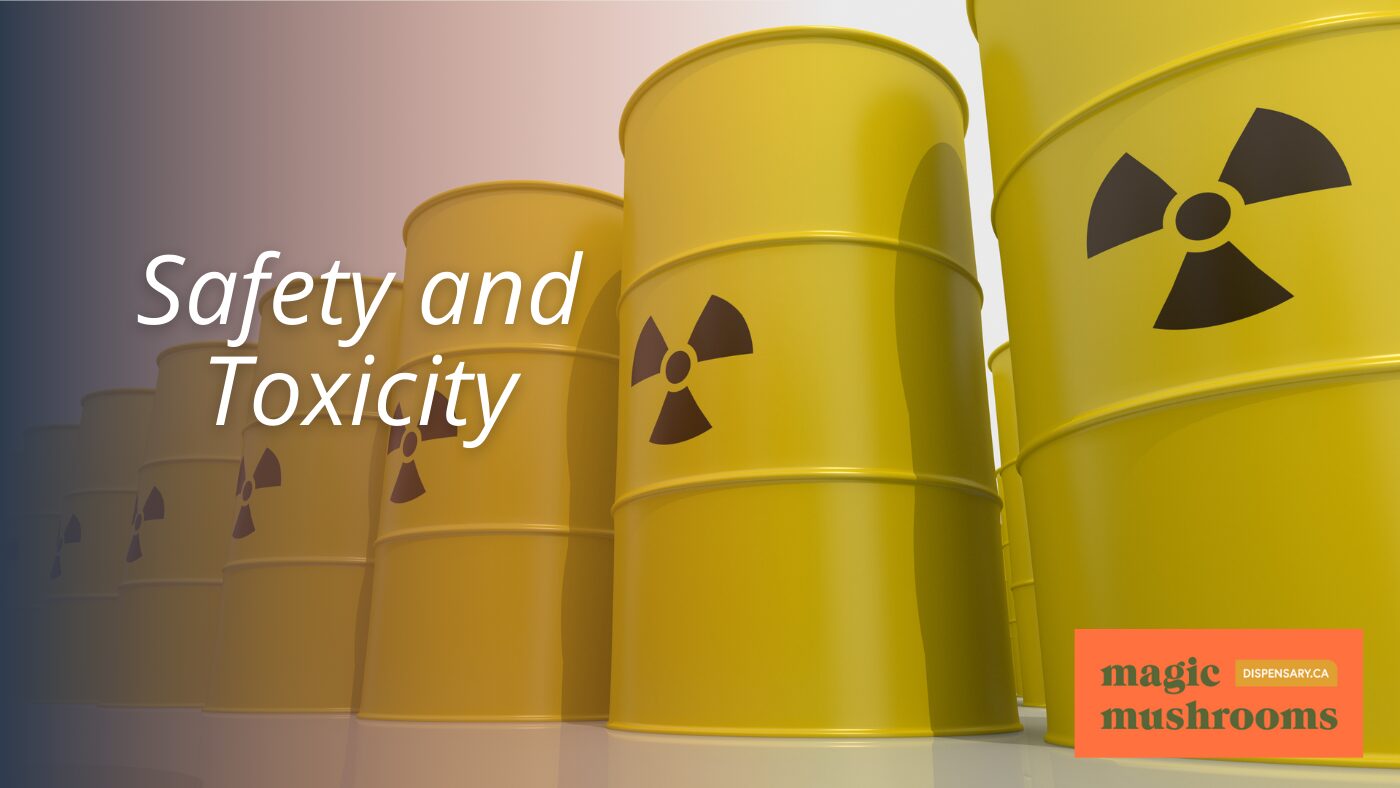
Potential Toxic Compounds
The Purple Bruising Mushroom, like many other fungi, can contain toxic compounds. Misidentification is a significant risk, as consuming the wrong species can lead to severe health issues. Some toxic mushrooms do not show any discoloration when damaged, unlike psilocybin mushrooms which bruise a blue or purple colour.
Symptoms of Poisoning
Symptoms of mushroom poisoning can vary widely but often include nausea, vomiting, and abdominal pain. In severe cases, symptoms may escalate to difficulty breathing, loss of coordination, and seizures. It’s crucial to seek medical attention immediately if poisoning is suspected.
First Aid and Treatment
Call poison control immediately if you suspect someone has ingested a poisonous mushroom. Do not wait for symptoms to appear. Keep the person calm and try to determine what they have ingested. Activated charcoal may be administered in some cases to absorb the toxins. Always follow the advice of medical professionals in these situations.
Immediate action is essential in cases of suspected mushroom poisoning to prevent severe health consequences.
Conservation and Sustainability
Threats to Populations
The Purple Bruising Mushroom faces several threats in its natural habitat. Habitat destruction due to urbanization and deforestation is a significant concern. Additionally, overharvesting by foragers can lead to a decline in populations. Climate change also poses a threat by altering the preferred growing conditions of these mushrooms.
Conservation Efforts
Efforts to conserve the Purple Bruising Mushroom include habitat protection and restoration. Establishing protected areas where these mushrooms can grow without disturbance is crucial. Public education campaigns can also help raise awareness about the importance of sustainable harvesting practices.
Sustainable Harvesting
To ensure the long-term survival of the Purple Bruising Mushroom, foragers should follow sustainable harvesting guidelines. This includes only taking a small portion of the mushrooms found and leaving enough behind to allow the population to regenerate. Foragers should also avoid damaging the surrounding habitat during collection.
By applying basic identification skills and utilising these resources, we can enhance our understanding of these fascinating organisms while reducing potential risks.
Legal Status and Regulations
International Laws
The legal status of psilocybin mushrooms varies significantly across the globe. In many countries, psilocybin, the main active ingredient, is classified as a controlled substance due to its psychoactive properties. This classification makes these mushrooms’ production, distribution, and possession illegal in numerous regions. However, some countries adopt a more lenient approach. For instance, the Netherlands permits the sale and use of fresh ‘magic truffles,’ which contain psilocybin. This legal loophole has created a market for these substances.
National Regulations
In the United States, psilocybin mushrooms are classified as a Schedule I controlled substance. This means they are considered to have a high potential for abuse and no accepted medical use. Despite this, some states and cities have moved towards decriminalization. For example, Denver, Colorado, and Santa Cruz, California, have decriminalized psilocybin to varying degrees. It’s important to note that decriminalization does not mean legalization; it simply reduces the penalties associated with possession.
Ethical Considerations
When considering the use of psilocybin mushrooms, it is crucial to be aware of the ethical implications. Purchasing psilocybin mushrooms online remains a risky endeavor. Most countries deem this illegal, and the potential legal repercussions can be severe. Additionally, the quality and safety of mushrooms bought online can be questionable. Therefore, it is essential to thoroughly research and comply with local laws to avoid potential legal troubles.
Regardless of your location’s legal status, you are strongly advised to research the regulations thoroughly before attempting to purchase any form of psilocybin mushrooms. It is imperative to stay informed and comply with local laws to avoid potential legal troubles.
Research and Future Directions
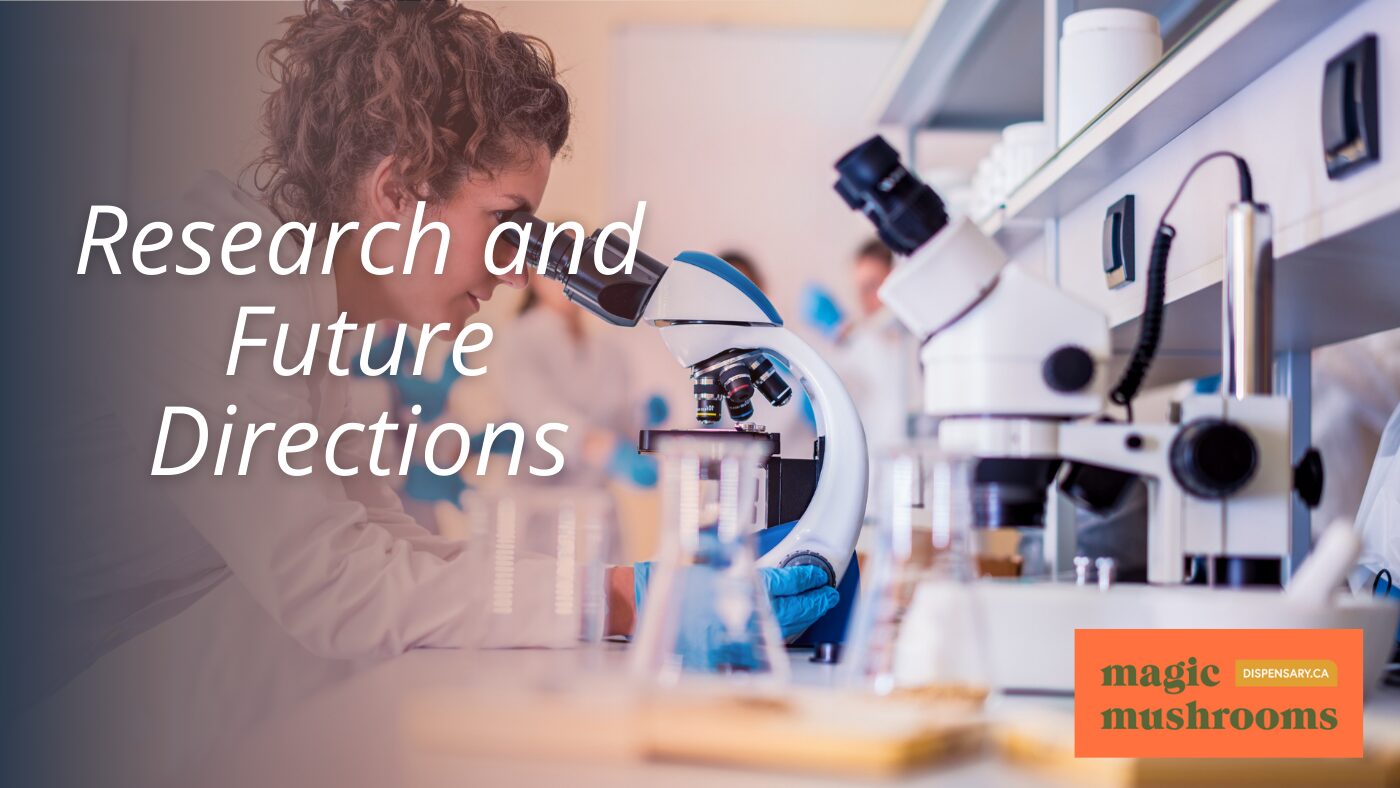
Current Research
Recent studies have shown that psilocybin, the active compound in the Purple Bruising Mushroom, has potential therapeutic benefits. Researchers at Johns Hopkins found that psilocybin was an effective treatment for depression and nicotine and alcohol addictions, as well as other substance use disorders. Additionally, studies have shown that magic mushrooms were effective in relieving the emotional distress of people with life-threatening cancer diagnoses.
Potential Medical Applications
The Centre for Psychedelic and Consciousness Research at Johns Hopkins is also researching how psychedelics affect a variety of conditions, such as Alzheimer’s disease, anorexia nervosa, opioid addiction, post-traumatic stress disorder (PTSD), and post-treatment Lyme disease syndrome. It is important to note that while researchers are currently exploring the therapeutic uses for psilocybin and other psychedelics, these substances are only utilized in controlled research and medical settings under the supervision of trained professionals.
Future Studies
Future studies aim to explore the long-term effects of psilocybin use, its potential for treating other mental health conditions, and its impact on brain function. Researchers are also interested in understanding the variability in potency and the best methods for administering psilocybin to maximize its therapeutic benefits. The importance of strategies for mental well-being during psychedelic use cannot be overstated.
As research continues to evolve, the potential for psilocybin to revolutionise mental health treatment becomes increasingly evident. This beginner guide on how to stop a bad shroom trip at magic mushroom dispensary highlights the need for safe and informed use of these substances.
Practical Tips for Foragers
Essential Gear
When heading out to forage for mushrooms, it’s essential to be well-prepared. Proper preparation is critical to enjoying foraged mushrooms’ full culinary and nutritional benefits. Start by gently cleaning, trimming off the dirty base, and using a flat-bottomed basket to carry your finds. Other valuable items include paper bags, a knife, and small plastic containers to protect fragile specimens.
Best Practises
Foraging is not just about finding mushrooms but also about doing it safely and sustainably. Always go with someone experienced if you’re new to foraging. This helps correctly identify mushrooms and avoid poisonous varieties. Look for species that grow alongside your target species to improve your identification skills. Remember, you don’t always have to find something; the learning process is equally valuable.
Common Mistakes to Avoid
Avoid foraging in areas that are too exposed to sunlight or lack moisture. Mushrooms thrive in protected, damp corners. Also, don’t pick all the mushrooms you find; leave some behind to ensure they can reproduce and maintain the population. Lastly, never consume a mushroom unless you know its identity, as many edible mushrooms have toxic look-alikes.
Foraging is a rewarding activity that connects you with nature. However, it requires knowledge, patience, and respect for the environment. Always forage responsibly to ensure the sustainability of mushroom populations.
Foraging can be rewarding and exciting, but being well-prepared is essential. Always research the plants and mushrooms you plan to collect and ensure you have the right tools. If you’re new to foraging or looking to expand your knowledge, visit our website for more tips and resources. Happy foraging!
Conclusion
In conclusion, identifying the purple bruising mushroom requires a keen eye and a systematic approach. One can distinguish these mushrooms from other varieties by paying attention to key characteristics such as color changes, spore prints, and gill structures. Always remember to handle mushrooms with care and respect, as misidentification can lead to severe consequences. This guide has provided essential tips and tricks to enhance your mushroom foraging skills. Happy and safe foraging!
Frequently Asked Questions
What does a purple bruising mushroom look like?
A purple bruising mushroom typically has a light to dark purple cap. When handled, the stem is usually white or light-colored and may show purple bruising. The gills are often dark, and the spore print is usually purple-brown.
Where can I find purple bruising mushrooms?
Purple bruising mushrooms are commonly found in wooded areas, especially in places with rich, decaying organic matter. They often grow in clusters on or near rotting wood, such as fallen logs or stumps.
When is the best time to forage for purple bruising mushrooms?
The best time to forage for purple bruising mushrooms is from late summer to early autumn. They are most likely to appear then, especially after a period of rain.
Are purple bruising mushrooms safe to eat?
Not all purple bruising mushrooms are safe to eat. Some can be toxic. It’s essential to correctly identify the mushroom before consuming it. When in doubt, consult an expert or avoid eating it altogether.
How can I identify a purple bruising mushroom?
You can identify a purple bruising mushroom by examining its cap, stem, gills, and spore print. Look for purple bruising on the stem and cap. A spore print test can also help confirm its identity, showing a purple-brown color.
What should I do if I suspect mushroom poisoning?
If you suspect mushroom poisoning, seek medical attention immediately. Symptoms may include nausea, vomiting, abdominal pain, and confusion. It’s crucial to act quickly to get the proper treatment.
Can I grow purple bruising mushrooms at home?
Yes, you can grow purple bruising mushrooms at home, but it requires specific conditions, such as the right substrate, humidity, and temperature. Mushroom growing kits are available to simplify the process.
Why do some mushrooms bruise purple?
Some mushrooms bruise purple due to the presence of certain chemical compounds that react when the mushroom is damaged. This reaction can help identify the species but should not be the sole identification method.
Originally posted on July 30, 2024 @ 3:27 pm

